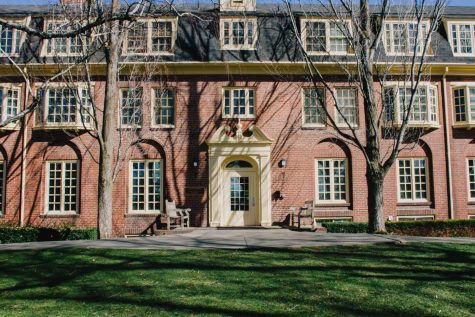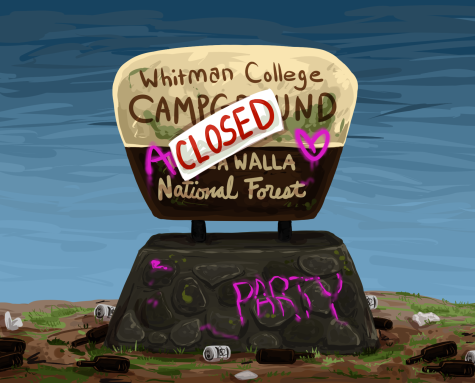Cleaning up our acts: The moldy truth about res hall bathrooms
October 28, 2021
Communal bathrooms: functioning as both hygienic stations and displays of our collective filth, these sites remind us every day that we are all disgusting mortals requiring routine and unsightly decontamination rituals. Typically characterized by a “barely there” curtain, a few stray hairs and a thin film on the floor that is potentially foot fungus, our pruning practices are mostly condensed to one feature of the communal bathroom: the showers.
Douglas resident and junior Jon Na explains that the bathtub showers come with a risk of stubbing one’s toe on the sliding door but gave a glowing review otherwise. When asked about mold, he said, “Mold? Nah, here at Whitman we break the mold, we do our own thing.”
Though despite claims of intrepid individuality, those living in residence halls tend to be united by the fact that most are really good about keeping their own stuff organized and on the whole good about personal hygiene, but not always cognizant of the mess they are leaving for “someone else” (the custodial staff) to deal with.
One such mess is the slow accumulation of mold on shower curtains and between the cracks of the tile. It plagues nearly every bathroom in one crevice or another, a sign that we the residents are continually allowing moisture to build up on countertops, walls and tile.
Mold requires humidity and condensation to thrive, both of which are caused by taking long, hot showers with the window closed or the fan off. Allowing the shower or sink to leak onto the counter or floor (and then not soaking it up with a bath mat) also contributes to the spores.
The showers, usually fewer in number than the stalls, provide the most accurate representation of the residents. They are where one tends to spend the most time and the feature that the residents have the most control over. Anything can happen when using a toilet, and not everyone was raised to successfully unclog one, so it’s important to assess the state of a bathroom by something everyone knows how to work.
In Stanton, for instance, sophomore Ruby Beard is satisfied with their performance, save for a few quibbles over the temperature.
“They’re so clean!” Beard said. “The water is warmish, could be warmer, and the water pressure could be stronger. There is no mold, one time I saw a spider though.”
Junior Jun Park gives a slightly more critical assessment, prefacing that his complaints are not the custodial staff’s fault.
“I understand that my building is supposed to have some good energy-saving standard. However, the simple fact that the building is incapable of producing hot water after the sun goes down is a verified problem.”
Neither resident complained about the cleanliness of the showers, a trend continued by Prentiss resident and sophomore Clare Duan, who said, “They’re pretty decent, other than the fact that the stalls are very small unless yours has the bathtub. Generally fairly clean! The staff do a great job and we’re very grateful.”
Generally, the showers and bathrooms as a whole seem to have a good reputation. The biggest gripes can be placed into two categories: the age of the building, and—more often than not—the mess of the residents.
First-year Brandon Neifert attests that other than a few faded spots, the communal bathrooms in North are well kept.
Along the same lines, previous Anderson resident and sophomore Ava Seifred said, “In B sec there’s an air filter that would spray dirt and dust onto the sinks. I don’t think it’s the staff’s fault, they do a great job! It’s just the oldness of the building.”
On the matter of personal responsibility, Jewett RA Willie Schack said that “some people forget to lift the seat sometimes and don’t often flush the toilets but other than that it’s in pretty good shape…People are really good about keeping their stuff to their own bathroom cubbies.”
Schack’s comments are a microcosm of that larger social phenomenon occurring within the stalls and behind the curtains of communal bathrooms—the tendency to forget that all messes have to be cleaned up by someone.
Reminders on cute little sticky notes to “please flush,” to “not leave pee on the ground” and to “make sure the mat is next to the shower when showering” still hang out inside stalls and around curtains. The cold hard truth is that these are the bare minimum considerations that must be taken. The bathrooms are so clean because custodial staff clean them routinely, but they have to encounter really silly messes that should have just been dealt with right away.
The custodial staff have done a really wonderful job keeping our spaces clean, but we can help and show our appreciation by taking precautions against everyday beasts like mold. It is incumbent upon those living in residence halls to remember during our daily ablutions that our actions have a lasting effect and act with care to ensure that we are maintaining a clean space.






